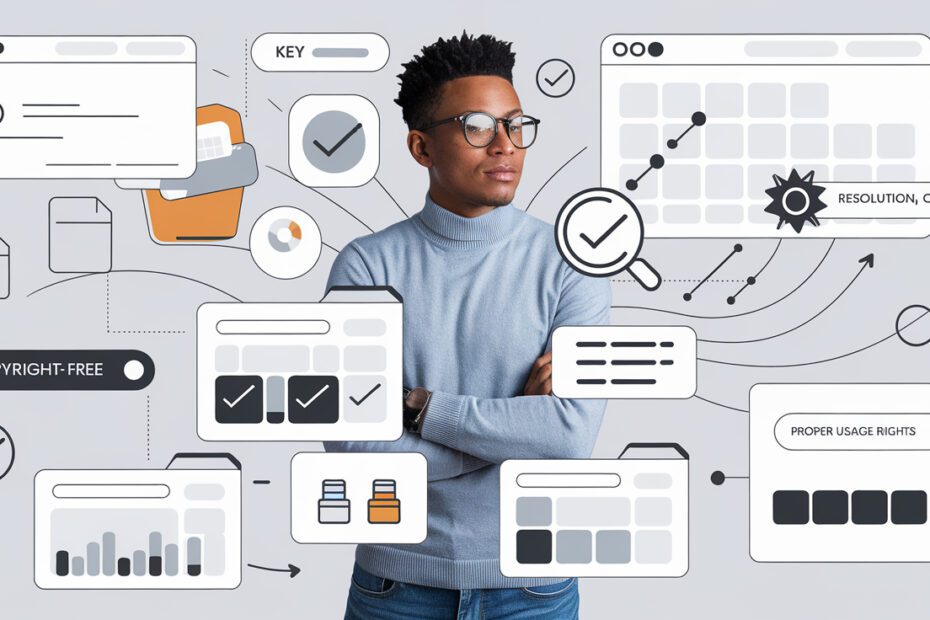When I first started creating content, finding copyright-free images felt like a never-ending scavenger hunt. I mean, I needed visuals that were legal to use, actually looked good, and didn’t require a Ph.D. in licensing agreements to figure out. If you’ve ever been in that situation, trust me—you’re not alone.
I was constantly searching for the perfect image that wouldn’t come back to haunt me with a lawsuit. After a lot of trial and error (and a few near-misses), I finally cracked the code. In this guide, I’ll take you through everything I’ve learned about finding and using copyright-free images. We’re talking about the key areas you need to focus on, the best sources out there, and some tricks that have saved me time (and headaches). Let’s dive in and get you some top-tier visuals without the drama!
1. What Are Copyright-Free Images?
Alright, so what’s the deal with copyright-free images? Early on, I made the rookie mistake of thinking that “free” meant “do whatever you want with it.” Spoiler alert: it doesn’t. Copyright-free images are images that the creator has made available for public use, which means you don’t have to worry about legal drama… as long as you follow the rules.
Here’s what I learned the hard way:
- Public Domain: These are like finding gold at the end of a rainbow. You can use them however you want, no questions asked. Think of historical images, old paintings, or anything where the copyright has expired.
- Creative Commons: This is where it gets a bit trickier. Some images require you to give credit to the creator, while others might limit how you can use the image. Always check the specific license.
- Royalty-Free: Don’t let the name fool you. Royalty-free means you pay for the image once, and then you can use it as many times as you want without paying additional fees. But you do have to pay that initial cost.
I wish someone had told me this earlier—it would’ve saved me a lot of time and stress!
2. Ethical Use of Copyright-Free Images
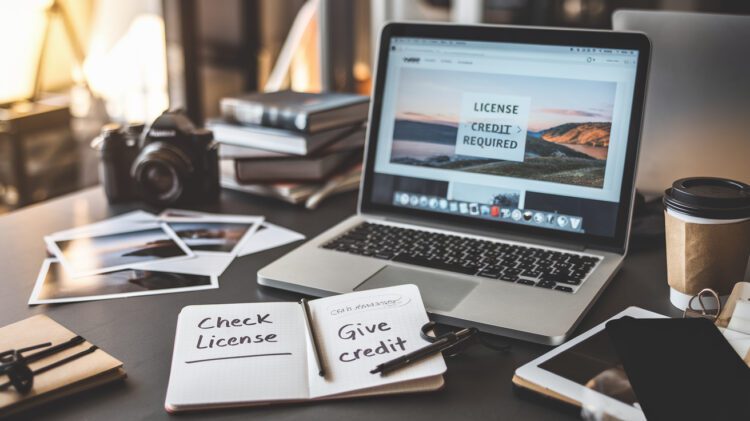
Now, just because something is copyright-free doesn’t mean you can go wild with it. There’s still an ethical way to use these images. Early in my journey, I didn’t give much thought to crediting the photographer, but then I started hearing horror stories about creators getting hit with copyright claims because they didn’t give proper credit.
Here’s what I do now to stay on the safe side:
- Check the License: Always, always, always check the license. Whether it’s Creative Commons or Public Domain, I make sure I know what the rules are before using the image.
- Give Credit: If the license says to give credit, I do it. A simple line like “Photo by [Photographer] on [Platform]” is all it takes to keep things respectful.
- Follow the Rules: Some images have restrictions on commercial use or modification. If an image says no commercial use, I won’t use it in ads or sell it in products. Simple as that.
Using images ethically is more than just a legal necessity—it’s about respecting the artists who made them available. It’s a small thing that goes a long way in building good karma.
3. Comparing Different Image Licenses
I’ll admit, when I first started looking at different licenses, it felt like I was trying to learn a new language. What’s the difference between CC0 and CC BY-SA? Is one better than the other? After some serious research (and a few Google rabbit holes), here’s the lowdown on the licenses you’ll run into:
- Public Domain: These are the most straightforward. There are no restrictions—use them however you like. Most of the time, these images are really old or were intentionally released into the public domain by their creators.
- Creative Commons:
- CC0: This is as close to public domain as you can get. No attribution needed, just download and go!
- CC BY: You have to credit the creator, but otherwise, you’re free to use the image however you want.
- CC BY-SA: Similar to CC BY, but if you modify the image, you have to share it under the same license.
- CC BY-NC: You can use it for free, but only for non-commercial purposes. So, no slapping it on ads or products for sale.
- Royalty-Free: Pay once, use forever. But remember, it’s not “free” in the true sense—you still have to pay upfront for these images.
By figuring out these licenses, I saved myself from a lot of ‘Oops, I didn’t know I couldn’t use that’ moments. To dive deeper into the details of stock image licenses, check out this guide on Understanding Stock Image Licensing Types.
4. Hidden Gems: Lesser-Known Copyright-Free Image Sources
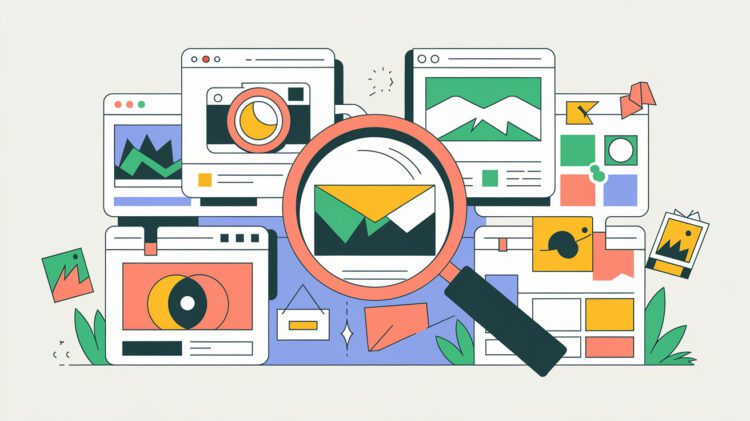
When I first started, I stuck to the big names: Unsplash, Pexels, Pixabay—you know the drill. But after a while, I felt like everyone was using the same images, and my content wasn’t standing out. That’s when I decided to dig a little deeper and find some lesser-known platforms. Let me tell you, it was worth the search.
Here are a few of my go-to hidden gems:
- StockSnap.io: I love how frequently this site is updated with fresh, high-resolution photos. It’s like having a new collection to explore every week.
- Picjumbo: This site has a creative edge. It’s perfect for when I need images that feel a little more artistic or unique.
- Reshot: If you’re looking for the best sources for copyright-free stock images, Reshot is a game-changer. Their handpicked images have more personality and flair, making them stand out from the usual stock photos.
- Kaboompics: One of my favorite things about Kaboompics is that it lets you search by color palette, which is a lifesaver when I’m trying to keep a consistent aesthetic for my brand.
These platforms have saved me countless times when I wanted my content to stand out from the sea of generic images. For more recommendations, explore this list of the Best Websites for Free Stock Images.
5. Creating Your Own Copyright-Free Images
One day, after spending hours scrolling through image libraries, I thought, “Why not just take my own pictures?” And you know what? It was one of the best decisions I made. Creating your own copyright-free images doesn’t have to be complicated or expensive.
Here’s my simple DIY process:
- Smartphone Photography: You don’t need a fancy camera. Most smartphones today take high-quality photos, especially in good lighting. I’ve captured some amazing shots with just my phone.
- Editing Tools: I’m not a Photoshop pro, so I use apps like Snapseed and Canva. They’re easy to use and let me tweak brightness, contrast, and add filters to make my images look professional.
- Sharing: Sometimes, I even share my own images on Unsplash. It’s a nice way to give back to the community, plus it’s cool seeing others use my photos.
By creating my own images, I save time, get exactly what I need, and I know for sure that there are no copyright strings attached. Win-win!
6. How to Spot Fake “Copyright-Free” Claims
Not all websites are as trustworthy as they seem. I learned this the hard way when I found out that some “free” images I’d downloaded weren’t actually free at all. Yikes! Luckily, I caught it before using them in a major project, but it was a close call.
Here’s how I avoid fake claims now:
- Stick to Trusted Sites: When I’m wondering where to find free images without copyright restrictions, I stick to reputable platforms like Unsplash, Pexels, and Pixabay. They’re upfront about their licenses, so I know exactly what I’m getting.
- Use Reverse Image Search: If I’m ever in doubt, I run a quick reverse image search on Google. This helps me find the image’s source and check if it’s really copyright-free.
- Check the License: If the site doesn’t clearly display its licenses or has vague terms like “free for personal use,” I steer clear. It’s just not worth the risk.
These small steps help me avoid the dreaded copyright infringement notice and keep my projects stress-free.
7. Impact of Copyright-Free Images on SEO and Website Performance
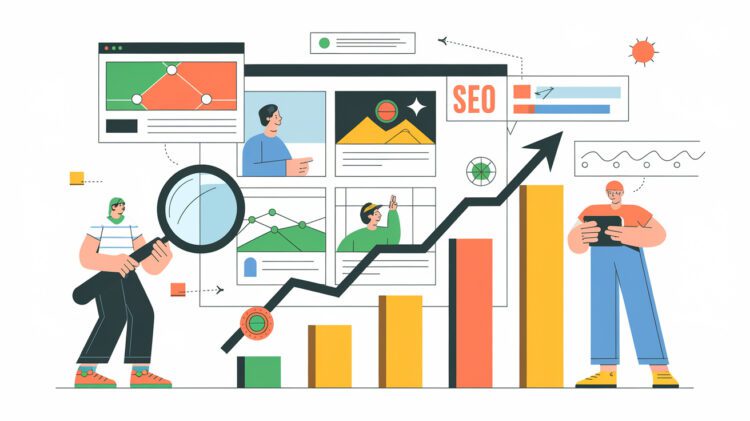
- File Names: I used to just upload images with random names like “IMG_4567,” but now I rename them with descriptive, keyword-rich file names like “best-copyright-free-images-for-blogs.jpg”. This simple change helps search engines understand the content better, which gives my SEO a nice little boost.
- Lazy Loading: Another trick I learned is lazy loading. It basically means that images only load as the user scrolls down the page, which improves the page speed and user experience. Faster pages rank better in search results, so it’s a win for both SEO and visitors.
By taking these steps, I’ve noticed a significant improvement in my site’s performance. Images that are optimized not only enhance the look and feel of your content, but they also help boost your rankings, making them a key part of your overall SEO strategy.
8. Industry-Specific Use of Copyright-Free Images
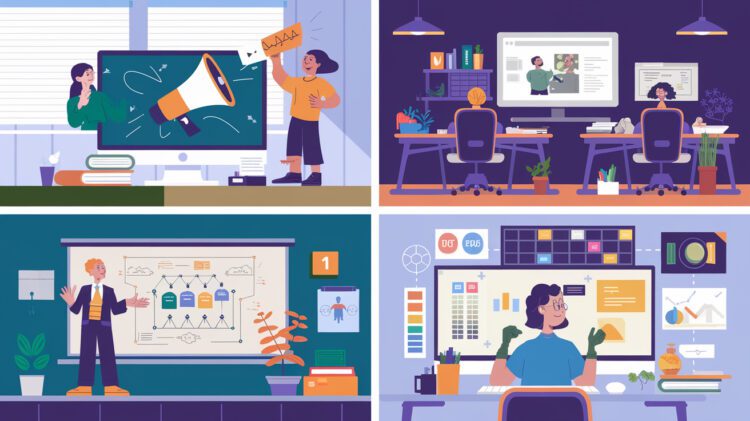
Depending on the type of content I’m creating, my image needs can vary quite a bit. What works for a fun lifestyle blog isn’t necessarily going to cut it for a business website. Here’s how I tailor my copyright-free images to suit different industries:
- Marketing and Advertising: When I’m creating content for marketing campaigns, I look for eye-catching images that convey emotion and fit with the brand’s messaging. Bold, vibrant images tend to work best for ads and social media posts where I want to grab attention quickly.
- Education: For educational content, I prefer clean, simple visuals that enhance the learning experience without being too distracting. Whether it’s an infographic or a simple diagram, these images are used to clarify concepts and make the material easier to understand.
- Creative and Design: When it comes to creative fields like graphic design or interior decor, I go for copyright-free images that are aesthetically pleasing and high in quality. I also make sure to double-check that the images are available for commercial use, especially if they’re going into a design portfolio or being used for client work.
By matching the style and tone of the images to the needs of each industry, I’m able to create more targeted and effective content. Plus, having the right visuals can dramatically increase engagement, no matter the audience.
9. AI-Generated Copyright-Free Images
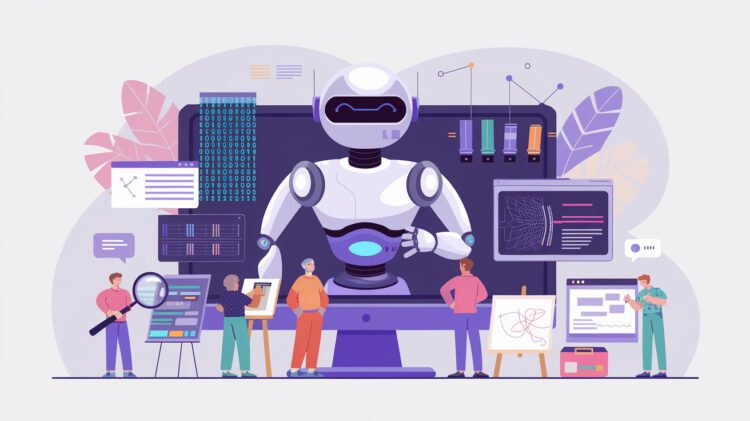
Here’s where things get really exciting. I recently discovered the world of AI-generated images, and it’s been a game-changer for my content creation. With tools like DALL·E, I can create custom copyright-free images or find free non-copyrighted images that perfectly suit my content needs with just a few clicks. No more endless scrolling through stock photo sites trying to find that perfect shot—now, I can create it myself!
Here’s why I’m hooked on AI-generated images:
- Unlimited Creativity: I can generate pretty much any image I can think of. Need a picture of a flying panda? Done. AI tools like DALL·E make it possible to turn my most creative ideas into reality, which is perfect for unique blog posts or social media content.
- Time-Saving: Instead of spending hours searching for the right image, I can create exactly what I need in minutes.
- Customizable: The beauty of AI-generated images is that I can customize them to fit my brand’s style perfectly. Whether I need a specific color scheme or a particular vibe, I have total control over the outcome.
With AI tools on my side, I feel like I’ve got my own personal design team. It’s one of the most exciting trends in content creation, and I can’t wait to see where it goes next.
10. Sustainability and Copyright-Free Images
Finally, let’s talk about something that doesn’t always get the attention it deserves—sustainability. By using copyright-free images, I’m not just saving money, I’m also making more eco-friendly choices. Traditional photoshoots can require travel, expensive equipment, and a lot of resources. But by using images that are freely available, I can reduce my environmental impact without sacrificing quality.
Here’s how using copyright-free images supports sustainability:
- Resource Efficiency: Instead of organizing photoshoots (which often require travel, lighting setups, and hours of shooting), I can find high-quality images that have already been created. This helps me avoid the environmental impact associated with traditional photography.
- Supporting Sustainable Creators: Some platforms feature photographers who are committed to eco-friendly practices. By choosing their work, I can support creators who are making a positive impact on the environment.
- Reusing Visuals: Instead of constantly creating new content, I can reuse images across different platforms and projects. This reduces the need for new resources while still providing fresh, engaging visuals.
In a world where sustainability is more important than ever, using copyright-free images is one way I can reduce my carbon footprint while still producing high-quality content.
Conclusion
At the end of the day, copyright-free images are an invaluable tool for any content creator. From avoiding legal issues to enhancing my website’s SEO, they’ve become a key part of my strategy. By understanding the different types of licenses, sourcing images from reliable platforms, and even creating my own visuals, I’ve been able to elevate my content while keeping things ethical and sustainable.
Whether you’re a blogger, marketer, or business owner, I highly recommend diving into the world of copyright-free images. It’ll save you time, money, and a whole lot of stress. So, what are you waiting for? Start exploring, create something amazing, and give your content the visual boost it deserves!
